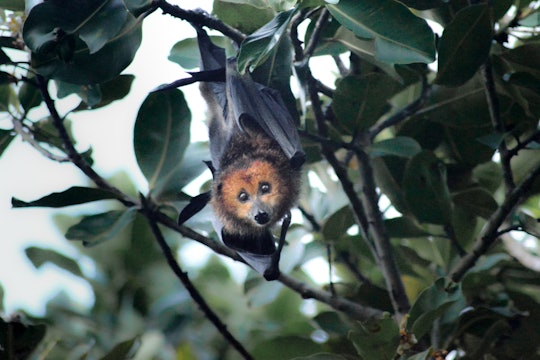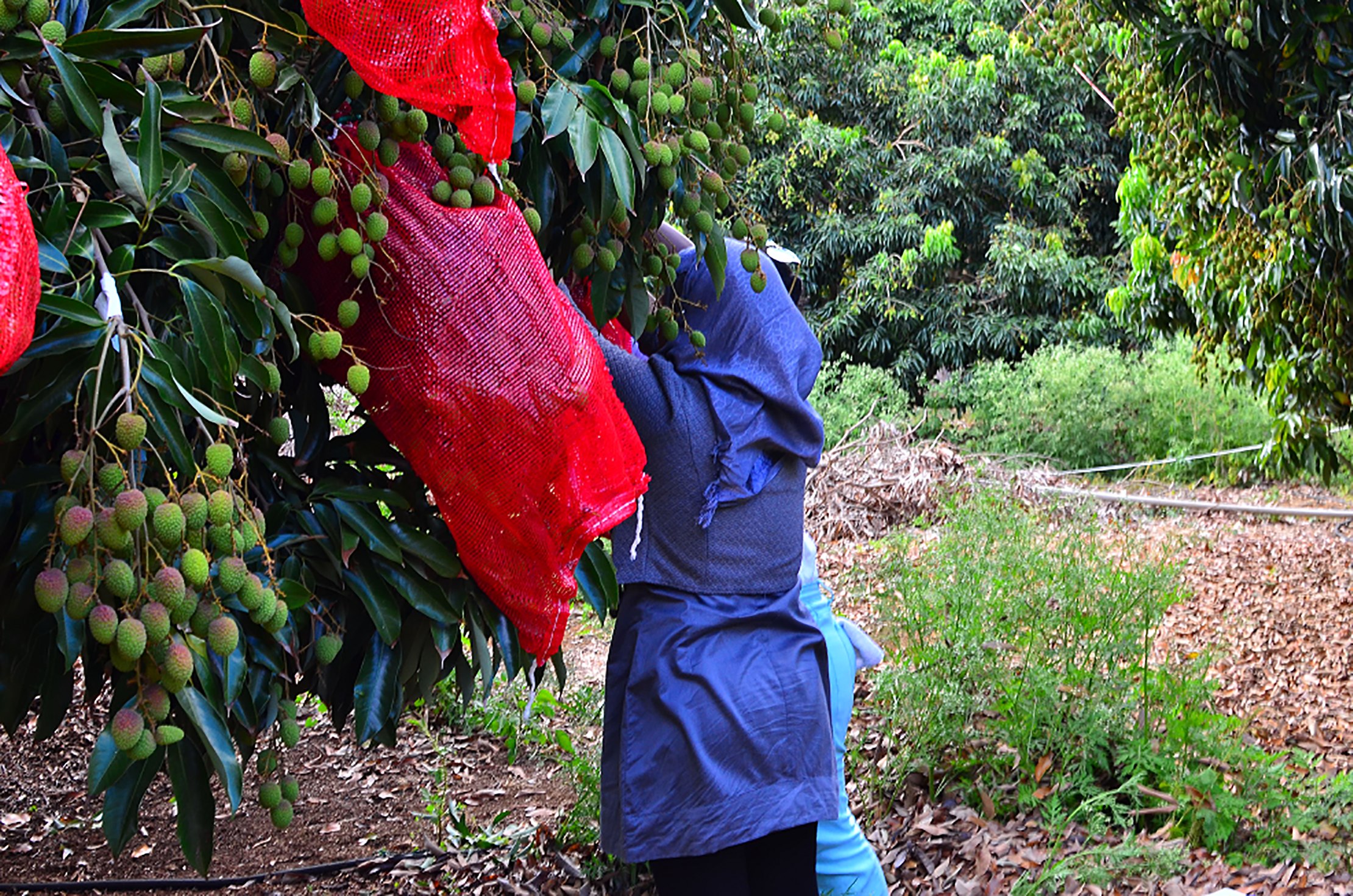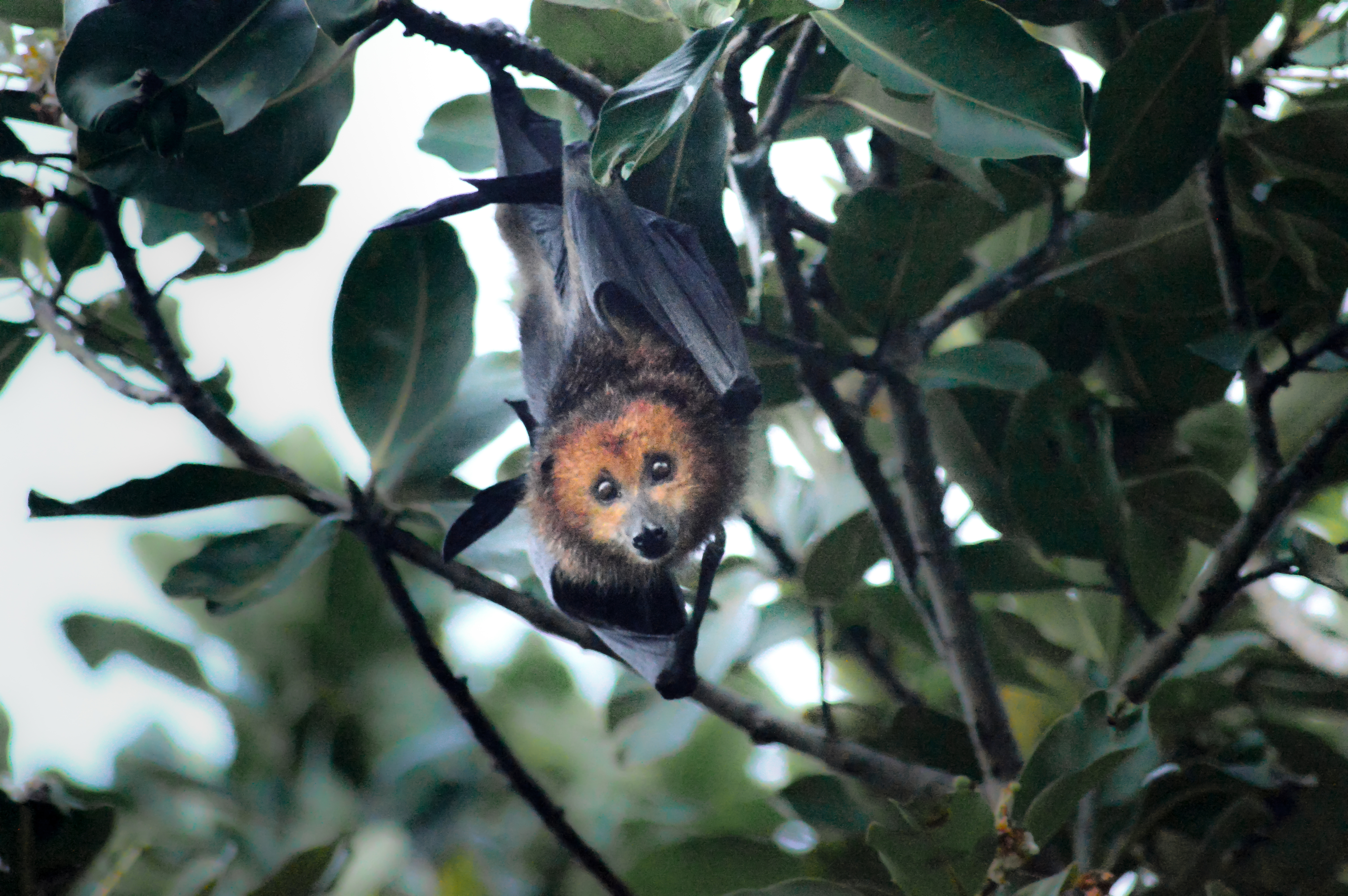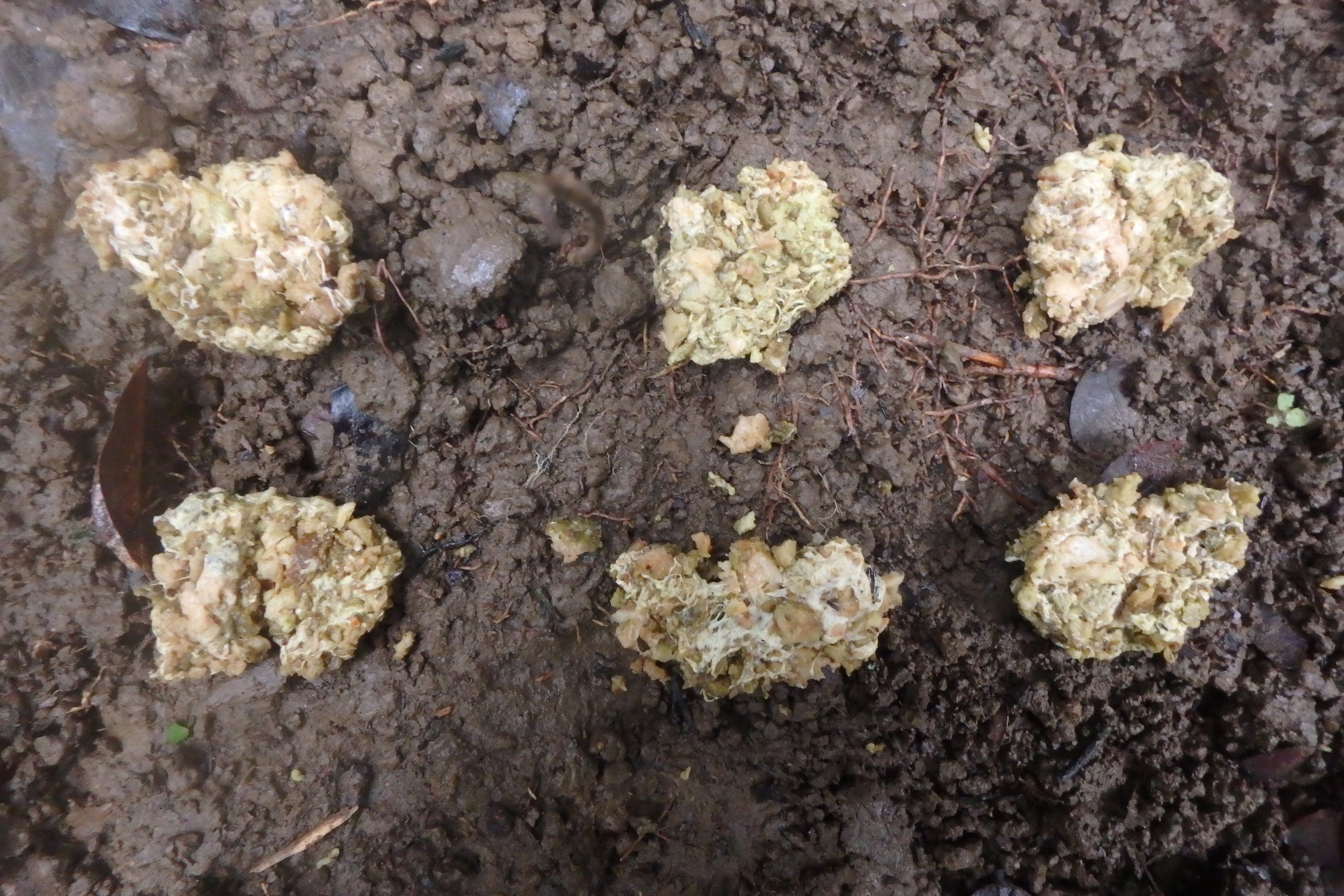
Vashist Seegobin, University of Mauritius
Weeding out non-native strawberry guava keeps a flying fox, and the crops it feeds on, out of harm's way
Fruit bats help the trees by dispersing seeds, and the trees help the bats by feeding them. Why not help the bats by helping the trees?
2020 was a difficult year for many of us, including the Mauritian flying fox, a fruit bat only found on a small archipelago off the south-east coast of Africa. Although the bat feeds on native fruits in forest remnants, it also forages in orchards, where it causes an estimated 180 million Mauritian rupees (5.24 million US dollars) in crop damages. Although birds and high winds also contribute to fruit losses, commercial and private growers blame the flying fox for their dwindling mango and lychee crops, prompting the Mauritian government to promote culling (population control via hunting) as the solution to their problem.
December 2020 marked the end of the fifth mass cull of the Mauritian flying fox in six years, a rather astonishing announcement given the fruit bat’s endangered status and ecological importance — the bat disperses seeds of many of the island's remaining native trees, and in some cases is the only remaining animal capable of doing so. Although ecologically unsound, the continued culling isn’t surprising given the bat’s current public image. Though the bats do eat mangoes and lychees, research shows that killing the bat does not improve fruit yields, whereas simple solutions (like netting and pruning trees) can prevent losses from not only bats but also birds.

Nylon netted bags are used to protect lychee panicles from damage by the Mauritian flying fox in Mauritius.
Tollington et al., 2019, PLoS One. Accessed via Wikimedia Commons.
More research is needed on the presence and behavior of the Mauritian flying fox in fruit orchards, but its behavior and use of forest habitat also have important implications for the perceived human-wildlife conflict between them and fruit growers. Furthermore, demonizing the bats shifts attention away from the challenges shared by the bats and the rest of the island’s biota. These challenges include habitat loss and degradation, but a study published last spring indicates that addressing these issues could be fruitful for the bat as well as its habitat.
Vashist Seegobin, one of the authors of that study and a PhD student in ecology and conservation at the University of Mauritius, frames the problem more bluntly. “There are not too many bats, we just see them more often. So that’s the problem. Why do we see them more often? It’s because their homes are being destroyed, their home is degraded.”
Forest degradation is an ongoing plight in Mauritius, compounding the effects of deforestation. Less than five percent of the island still retains native vegetation, and the native species in those remaining areas are rapidly being crowded out by non-native understory plants like strawberry guava trees.

The Mauritian flying fox is endangered, and a frequent target of culling efforts
Vashist Seegobin, University of Mauritius
Such widespread invasion by non-native plants negatively affects the fruiting and flowering of Mauritius's native forest plants, and “has important consequences for the food resources available to the bats, but also [reduces] roosting trees, as they prefer tall emergent trees,” says Gabriella Krivek, an ecology PhD candidate at the University of Greifswald in Germany, and first author on the study on restoration and bat foraging with Seegobin.
Given the widespread prevalence of non-native plants in Mauritius, weeding out non-native plants from forest fragments has been a conservation strategy since the 1930s, although weeded areas account for only about one percent of the island’s remaining habitat. Nor are these your typical garden weeds — many are woody plants, so removal requires cutting them down and painting herbicide on the stumps.
Krivek, with the help of Seegobin and their colleagues from the University of Mauritius, Mauritius Herbarium, and the Norwegian University of Life Sciences, took advantage of a few such weeded areas to test whether weeding increased native fruit production enough to benefit the Mauritian flying fox.
The dense stems of strawberry guava in the unweeded areas made access difficult. “It’s very difficult to move in an invaded forest, believe me, and it leaves a lot of scars,” recalls Seegobin. But, after battling their way through thick undergrowth, the researchers could address the first part of their hypothesis by counting the fruit produced by native tree
%20vs%20non%20weeded%20(right).jpg)
Weeded forest is markedly more open and maneuverable compared to the thick understory of non-native species in non-weeded forests
Vashist Seegobin, University of Mauritius
Testing whether the flying foxes could detect and take advantage of increased fruit availability in the weeded areas required a creative approach. Observing bat feeding habits is not easy — camera traps and videography work best when focused on a single focal point, branches and darkness limit visibility, and researchers can inadvertently affect bat behavior. Thus, rather than direct observation, Krivek and her colleagues used food remnants left behind by the bat's messy feeding habits.
Flying foxes get most of their nutrition from mashing fruit in their mouths, swallowing the juices, and spitting out the seeds and fibrous remains as pellets called ejecta. These fruity spitballs are keys to understanding many aspects of flying fox foraging, but traditionally are used to determine which species of fruit the bats eat and disperse, rather than how much the bats eat. Nonetheless, by deciding which fruit species to focus on ahead of time, Krivek could count the number of ejecta on the forest floor as a proxy for how much the flying foxes were eating overhead.

Researchers could tell which species of fruit the bats ate based on the size, color, and texture of the leftovers
Gabriella Krivek, University of Greifswald
Krivek and her team found fruit production was three times greater in weeded forests compared to non-weeded forests, and the increase in ejecta was even greater.
Granted, without also directly observing the bats, counting fruit ejecta alone does not tell us how many bats took advantage of the increased fruit availability, nor how much time they spent in weeded areas compared to elsewhere during a given night. Previous research has shown the bats can fly over 92 km (57 miles) in a given night, or more than the entire length of the island, so an important next step will be to quantify the extent to which weeded areas keep flying foxes in the forest and out of commercial fruit orchards. Nonetheless, Krivek hopes that, “If more areas are weeded, they [the bats] will be able to feed and survive on native fruits and keep themselves safer in native forest sites.”
Restoring Mauritius’s forests isn’t a silver bullet for the Mauritian flying fox. Weeding is expensive, and habitat quality likely interacts with other aspects of bat ecology such as competition for fruit with non-native macaque monkeys, availability of roosting sites, and seasonal changes in fruit availability. Seegobin is working on some of that, but much remains to be done.
Both Seegobin and Krivek also noted how public perception continues to be an issue for conservation of the flying fox, and lauded ongoing efforts by local NGOs like the Ecosystem Restoration Alliance that aim to change public perception of the bat.
Clearly, it will take multiple lines of action to save the Mauritian flying fox. Nonetheless, this study demonstrates how habitat restoration could fit into ongoing efforts and benefit not just the bat but other native species.





Great article Eva, and a good example of the complicated nature of human-wildlife conflict. This story is particularly upsetting because it seems to portend a cycle of degradation. The flying fox is supporting the seed spread and regeneration of native plant species, but as the bat populations decline, the spread of non-native and invasive plants will only increase on the island, which exacerbates their encounters with people as they seek out food in orchards. Especially considering their endangered status, these culls are clearly unsustainable. I’d be interested in what kind of social science research is occurring alongside this study to examine the perspectives of the various stakeholders, which might help determine the best course of action for educating the growers on more effective crop protection methods.